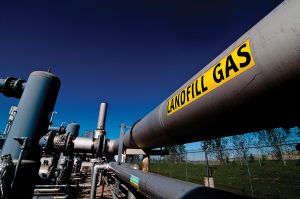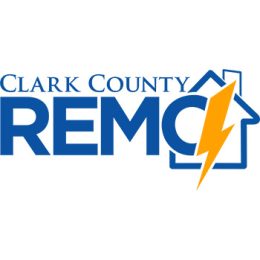 Hoosier Energy landfill methane gas (LMG) units generate 18 megawatts of energy. It is part of the “all of the above” energy strategy that includes coal, natural gas and other renewable sources.
Hoosier Energy landfill methane gas (LMG) units generate 18 megawatts of energy. It is part of the “all of the above” energy strategy that includes coal, natural gas and other renewable sources.
LMG systems capture gases released from decaying organic material in solid waste landfills to power gas turbines like the one shown.
Landfill generation projects contribute to reduction of greenhouse gases by destroying methane.
For more information about Hoosier Energy’s generation sources, log onto hoosierenergy.com/about/energy-strategy.
Your energy producer is a co-op, too!
Hoosier Energy is a generation and transmission (G&T) cooperative providing wholesale electric power and services to your electric cooperative. Founded in 1949 and based in Bloomington, the power producer generates power from coal, natural gas and renewable energy resources. The G&T delivers power through nearly 1,700 miles of transmission lines across central and southern Indiana and southeastern Illinois.
How energy is transmitted to your home
Power generation: Generating energy from a diverse set of fuel sources is an important part of the power supply portfolio, including natural gas facilities.
Switching substation: After leaving a power plant, electricity feeds into a substation that raises or “steps up” the voltage – similar to increasing water pressure.
Transmission: Electricity generated by Hoosier Energy and other utilities is placed on a regional grid and transmitted at high-voltage over long distances throughout central and southern Indiana and southeastern Illinois.
Distribution substation: These stations lower the voltage before being sent along to your local electric cooperative.
Energy to your cooperative: At this phase, your electric cooperative distributes and meters the energy you use at your home or business.



